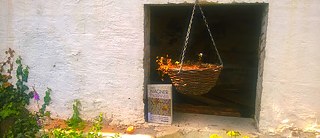August 2018
Jan Wagner: Telling it slant

In his 2015 collection 40 Sonnets, Don Paterson celebrated a form others might have dismissed as dusty – and in doing so proved the sonnet very much alive. With its unabashedly playful approach to rhyme and metre, the collection (which went on to win the Costa Poetry Award) presents sonnets for the twenty-first century, with the odd prose poem and concrete poem sitting alongside more traditional interpretations.
The popular and critical success of 40 Sonnets hinted at an appetite for poems which revisit familiar forms and take these in new directions. For readers thirsty for more, we have good news: German poet Jan Wagner tackles poetry from a similar angle and with just as much success. Self-Portrait with a Swarm of Bees collects Iain Galbraith’s translations of poems from throughout Wagner’s career, and deservedly won the Popescu European Poetry Translation Prize.
Wagner has a remarkable grasp of a range of traditional forms, from sonnets to sapphic stanzas. As Galbraith points out (in a preface well worth reading for its illumination of the relationship between translator, poet and poem), Wagner’s attitude to the forms he uses is always “experimentalist and adventurous”. An enthusiastic champion of the ways in which poetry can be invigorated by a freeing approach to traditional structures, Wagner allows strict rhymes, for example, to be usurped by slant rhyme, assonance and alliteration. The riotous ‘Bindweed’ offers a perfect, joyful example:
“it sends out feelers, fires a riot,
rises glorious in green.”
Galbraith’s success here in capturing the mouthfeel of the German is arresting. His evident familiarity with Wagner’s work means that his translations always realise the essence of the original, despite (or rather, because of) the freedoms he allows himself when transposing details, in order to retain the whole.
Wagner follows Emily Dickinson’s edict that the poet should “tell all the truth but tell it slant”. His gaze reveals fennel bulbs to be “pale hearts … crowding / together in a crate for warmth”, while “sheep are clouds who love the ground”. Many of his poems are reflections on place and landscape, but my favourites are those which show him to be a curious and perceptive observer of the everyday. These poems are beautiful in their immediacy, the way their stories occur “just as / you’re getting the coffee on”. In them, children try to dig a hole deep enough to reach all the way to Australia, while a tea-bag becomes a hermit “draped only in a / sackcloth mantle”. For fans of the unheimlich, the collection also offers unsettling invocations of fairy tales and myths, with one poem boldly announcing “what I know about stones is their weight / in the bellies of wolves”.
When used to describe poetry, the adjective “accessible” is rarely purely a compliment. Wagner’s poetry, however, belies the assumptions behind this. His poems delight and surprise on first reading, before unfolding, origami-like, ever new meanings and potentials.